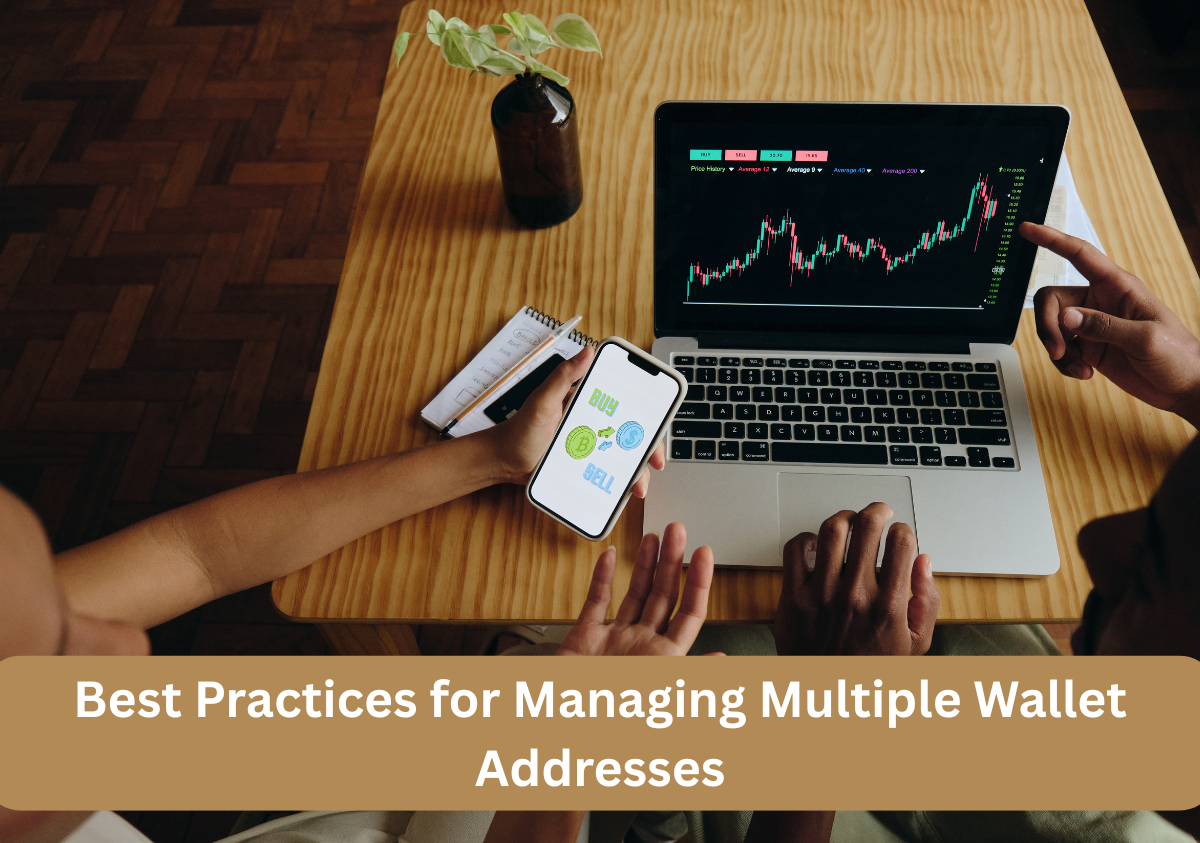With many users entering the ever-dynamic world of crypto, common practice has surged into the sound management of numerous crypto wallet addresses. Wallets can be used for trading, holding assets, payments to decentralized apps, or storing NFTs; managing multiple addresses is necessary for organization and security purposes. This guide provides clear and practical best practices to help you stay safe, compliant, and efficient while dealing with multiple wallets.
Why You Might Need Multiple Crypto Wallet Addresses?
There are several reasons why people use more than one crypto wallet address:
- To separate personal, business, and investment funds
- For improved privacy when using public blockchain networks
- To organize different digital assets like BTC, ETH, tokens, and NFTs
- To safely interact with decentralized finance tools and Web3 platforms
Managing multiple addresses offers flexibility but requires responsibility to avoid confusion or mistakes.
Understand the Basics: What Is a Crypto Wallet Address
In the simplest terms, a crypto wallet address is an alphanumeric string derived from a public key. Hence, the address allows you to receive cryptocurrencies like Bitcoin, Ethereum, or other tokens. A base address is one half of a cryptographic pair, the other half known as the private key. The public half of the key can be given freely, but the other half must never be disclosed.
Each address is paired with a crypto wallet, which could be a smartphone app, a browser extension, or a hardware wallet like Ledger.
Label and Track Wallet Addresses
Labeling each wallet address is key for avoiding mistakes when you use multiple cryptocurrency wallets. Here’s what you can do:
- Use a naming system like personal wallet, business ETH, NFT vault, or BTC savings.
- Track wallet activity using tools like CoinLedger.
- Maintain a secure offline record with address names and uses
- Organize your wallet addresses based on network, like Ethereum, Bitcoin, or ERC-20.
This makes it easier to remember which wallet is used for what purpose and helps prevent sending assets to the wrong address.
Security First: Backup and Protect Your Wallets
Multiple wallets mean multiple seed phrases and private keys to take care of. Best practices are as follows:
- Always store seed phrases offline in a secure place.
- Never reuse passwords or share your private keys.
- Use hardware wallets for high-value digital assets.
- Set up multi-factor authentication for software wallets when available.
Do not rely on screenshots or notes on your phone. Use cold storage or encrypted backup tools instead.
Avoid Common Mistakes With Multiple Wallets
Here are a few things to avoid:
- Do not mix networks. For example, bitcoin should be sent only to a wallet address, not Ethereum or ERC-20 addresses.
- Never store multiple seed phrases in the same file or folder.
- Be cautious with QR codes, as malicious ones can lead to scams.
- Avoid connecting unknown decentralized applications to your wallets.
You can also use blockchain explorers to verify addresses before sending or receiving any assets.
Use Tools That Support Multiple Wallet Management
Managing many wallets can be challenging, but the right tools can help:
- CoinLedger for tracking and tax reporting across wallets
- Portfolio apps that let you view all your crypto assets in one place
- Web3 dashboards to manage DeFi activity across addresses.
- Secure notepad or password managers record seed phrases and wallet use.
Ensure these tools support your blockchains and tokens, such as ETH, BTC, or ERC-20 tokens.
Keep Your Wallets Clean and Up-to-Date
Managing crypto wallet addresses isn’t just about organization. It’s also about keeping your cryptocurrency experience smooth and safe:
- Remove inactive wallets or move their funds to secure storage
- Regularly check balances and address activity.
- Avoid storing large amounts in a hot wallet.
- Use public-key cryptography best practices to minimize risks.
Final Thoughts
Whether going into decentralized finance, accepting Bitcoin, holding NFTs, or managing tokens, using multiple crypto wallet addresses virtually translates into more control and better security.
Labeling wallets and storing keys and seed phrases in secure locations, combined with appropriate utilization of reputable tools, will ensure confidence in managing your crypto wallets. A definite knowledge of how to get your crypto wallet address, when to use it, and how best to manage it securely, in turn, guarantees your digital assets are safe, organized, and under your control.

